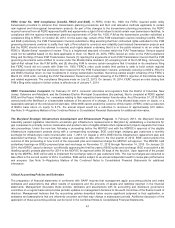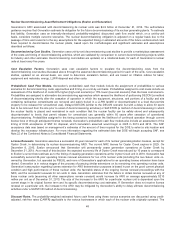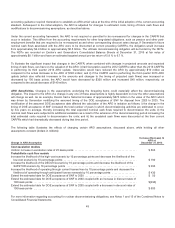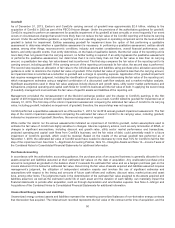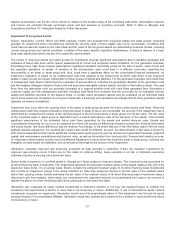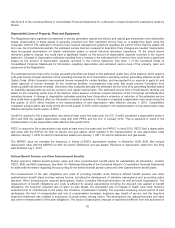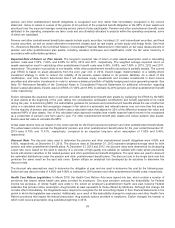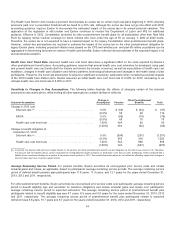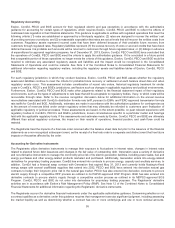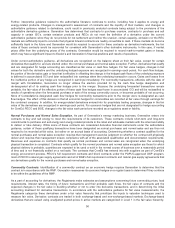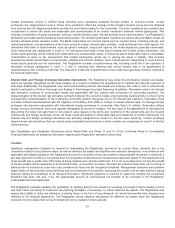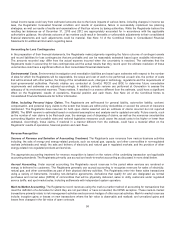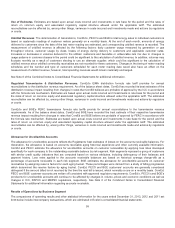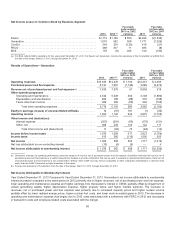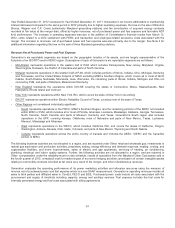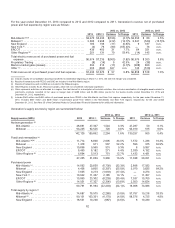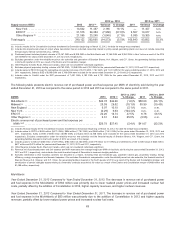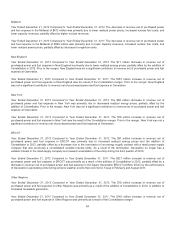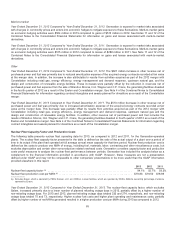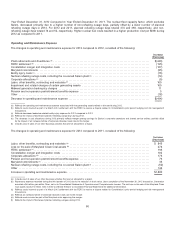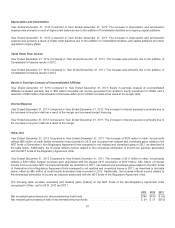ComEd 2013 Annual Report Download - page 63
Download and view the complete annual report
Please find page 63 of the 2013 ComEd annual report below. You can navigate through the pages in the report by either clicking on the pages listed below, or by using the keyword search tool below to find specific information within the annual report.Certainderivatives’ pricingisverifiedusingindicativepricequotationsavailable through brokersor over-the-counter,on-line
exchangesare categorizedinLevel 2.Thesepricequotationsreflecttheaverageofthebid-ask mid-point pricesandare obtained
fromsourcesthat theRegistrantsbelieve providethemostliquid market for thecommodity. Thepricequotationsare reviewedand
corroboratedto ensure thepricesare observable andrepresentativeofan orderlytransaction between market participants. This
includesconsideration ofactual transaction volumes, market deliverypoints, bid-ask spreads andcontractduration.TheRegistrant’s
derivativesare tradedpredominatelyat liquid tradingpoints. Theremainingderivativecontractsare valuedusingtheBlack model,an
industrystandardoption valuation model.TheBlack model takesinto account inputssuch ascontract terms, includingmaturity, and
market parameters, andassumptionsofthefuture pricesofenergy, interest rates, volatility, creditworthiness andcreditspread. For
derivativesthat tradeinliquid markets, such asgeneric forwards, swapsandoptions, themodel inputsare generallyobservable.
Such instrumentsare categorizedinLevel 2.For derivativesthat tradeinless liquid marketswithlimitedpricinginformation,the
model inputsgenerallywouldincludebothobservable andunobservable inputs. Ininstanceswhere observable data is unavailable,
consideration is given to theassumptionsthat market participantswoulduseinvaluingtheasset or liability. This includes
assumptionsabout market risks such asliquidity, volatilityandcontractduration.Such instrumentsare categorizedinLevel 3 asthe
model inputsgenerallyare not observable.TheRegistrantsconsider nonperformancerisk, includingcreditrisk inthevaluation of
derivativecontractscategorizedinLevel 1,2and3,includingboth historical andcurrent market data initsassessment of
nonperformancerisk, includingcreditrisk. Theimpactsofcreditandnonperformancerisk to date havegenerallynot been material to
thefinancial statements.
Interest Rate and Foreign Exchange Derivative Instruments. TheRegistrantsmayutilizefixed-to-floatinginterest rate swaps,
which are typicallydesignatedasfairvalue hedges, asameansto achievethe targetedlevel ofvariable-rate debtasa percent of
total debt.Additionally, theRegistrantsmayuseforward-startinginterest rate swapsandtreasuryrate locks to lock ininterest-rate
levelsin anticipation offuture financings andfloatingto fixedswapsfor projectfinancing. Inaddition,Generation entersinto interest
rate derivativecontractsto economicallyhedgerisk associatedwiththeinterest rate component ofcommoditypositions. The
characterization oftheinterest rate derivativecontractsbetween theeconomic hedgeandproprietarytradingactivityisdriven by the
correspondingcharacterization oftheunderlyingcommodityposition that givesrisetotheinterest rate exposure.Generation does
not utilizeinterest rate derivativeswiththeobjectiveofbenefitingfrom shiftsor changeinmarket interest rates. Tomanageforeign
exchange rate exposure associatedwithinternational energy purchasesincurrenciesother than U.S. dollars, Generation utilizes
foreigncurrency derivatives, which are typicallydesignatedaseconomic hedges. Thefairvalue oftheagreementsiscalculatedby
discountingthefuture net cash flows to the present value basedon the terms andconditionsoftheagreementsandtheforward
interest rate andforeignexchangecurves. Astheseinputsare basedon observable data andvaluationsof similar instruments, the
interest rate andforeignexchangederivativesare primarilycategorizedinLevel 2 inthefairvalue hierarchy. Certainexchange
basedinterest rate derivativesthat are valuedusingunadjustedquotedpricesinactivemarketsare categorizedinLevel 1 inthefair
value hierarchy.
See QuantitativeandQualitativeDisclosuresabout Market Risk andNotes11 and12 oftheCombinedNotesto Consolidated
Financial Statementsfor additional information regardingtheRegistrants’ derivativeinstruments.
Taxation
Significant management judgment is requiredindeterminingtheRegistrants’ provisionsfor incometaxes, primarilydue to the
uncertaintyrelatedto taxpositionstaken,aswell asdeferredtaxassetsandliabilitiesandvaluation allowances. Inaccordancewith
applicable authoritativeguidance,theRegistrantsaccount for uncertainincometaxpositionsusingabenefitrecognition model witha
two-step approach includingamore-likely-than-not recognition thresholdandameasurement approach basedon the largestamount
oftaxbenefitthat is greater than 50%likelyofbeingrealizedupon ultimate settlement.Ifitis not more-likely-than-not that thebenefit
ofthetaxposition will besustainedon itstechnical merits, no benefitis recorded. Uncertaintaxpositionsthat relate onlyto timingof
when an itemisincludedon a taxreturn are consideredto havemet therecognition threshold. Management evaluateseach position
basedsolelyon thetechnical meritsandfactsandcircumstancesoftheposition,assumingtheposition will beexaminedbyataxing
authorityhavingfull knowledgeofall relevant information. Significant judgment is requiredto determine whether therecognition
thresholdhasbeen met and, if so,the appropriate amount ofunrecognizedtaxbenefitsto berecordedintheRegistrants’
consolidatedfinancial statements.
TheRegistrantsevaluate quarterlythe probabilityofrealizingdeferredtaxassetsbyreviewingaforecastoffuture taxable income
andtheirintent andabilityto implement taxplanningstrategies, if necessary, to realizedeferredtaxassets. TheRegistrantsalso
assess theirabilityto utilizetaxattributes, includingthoseintheformofcarryforwards, for which thebenefitshave already been
reflectedinthefinancial statements. TheRegistrantsrecordvaluation allowancesfor deferredtaxassetswhen theRegistrants
concludeitis more-likely-than-not such benefitwill not be realizedinfuture periods.
57


